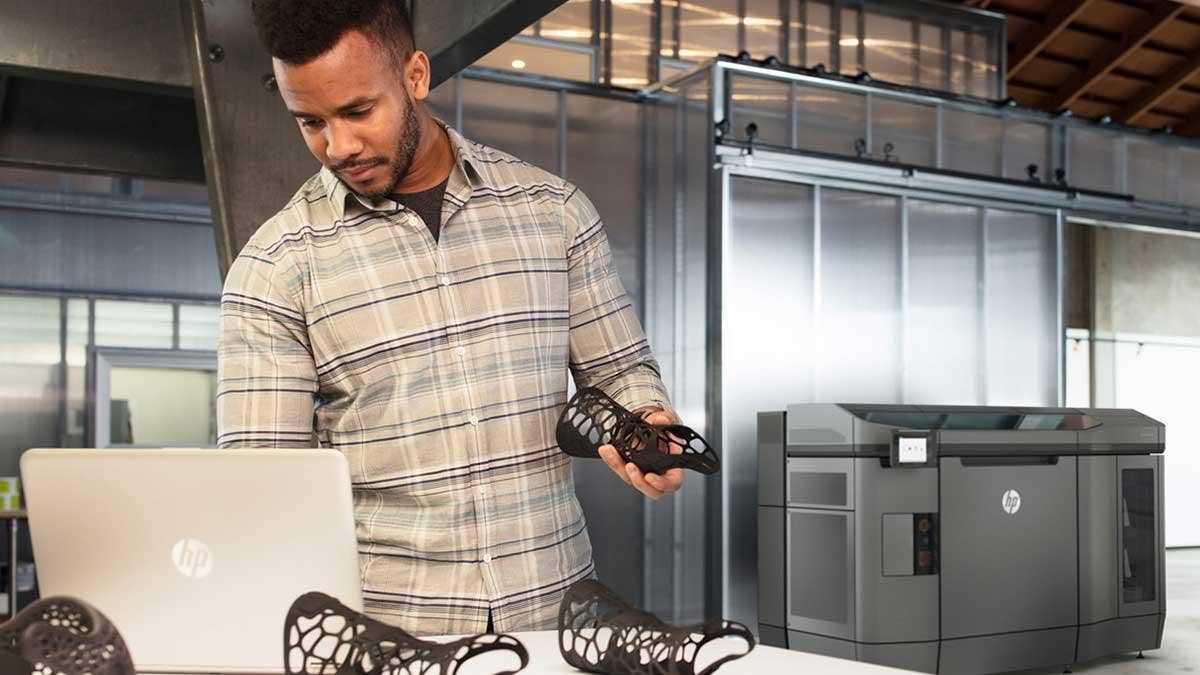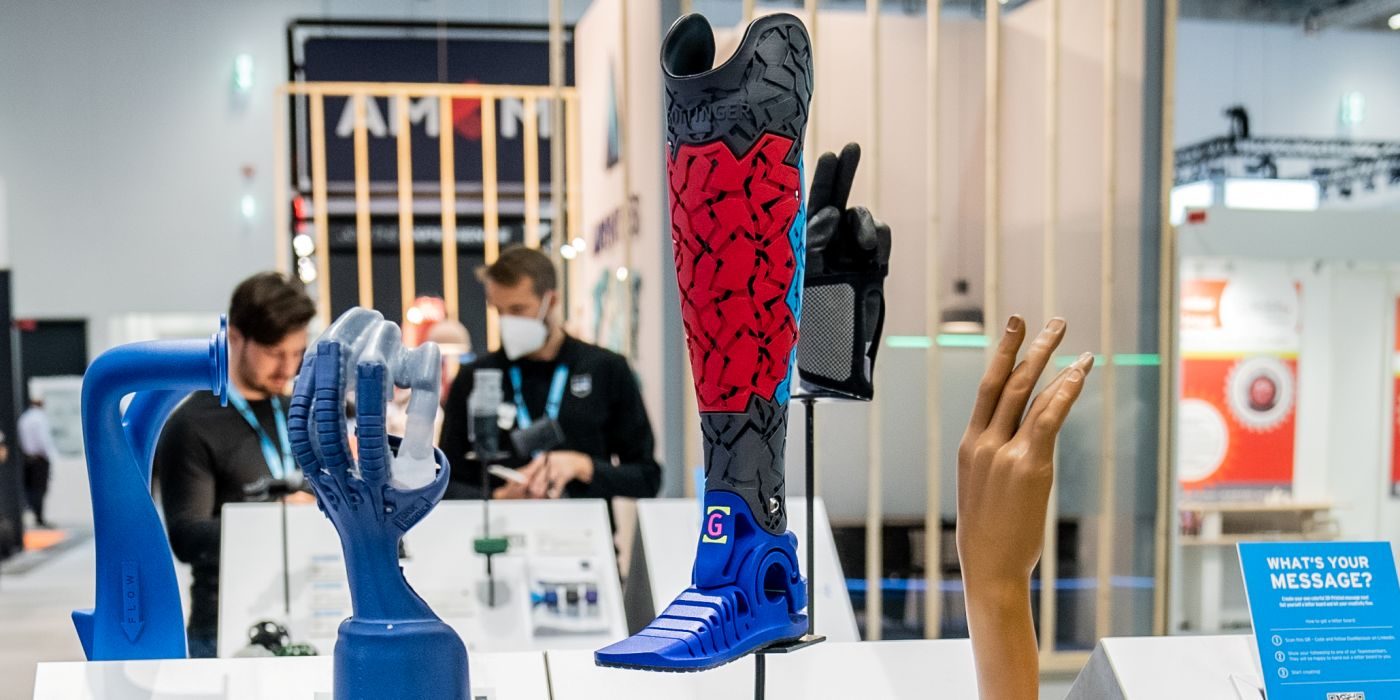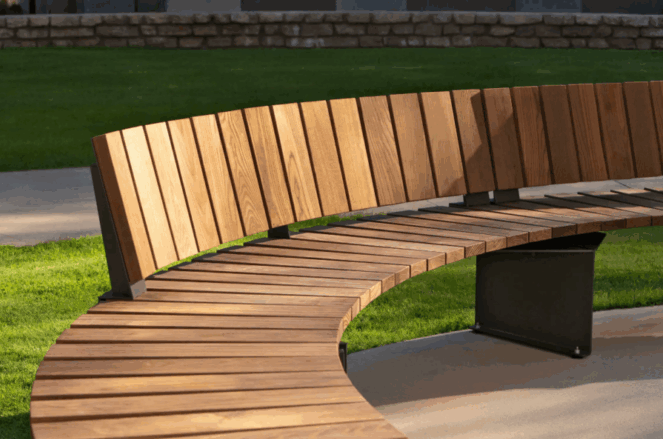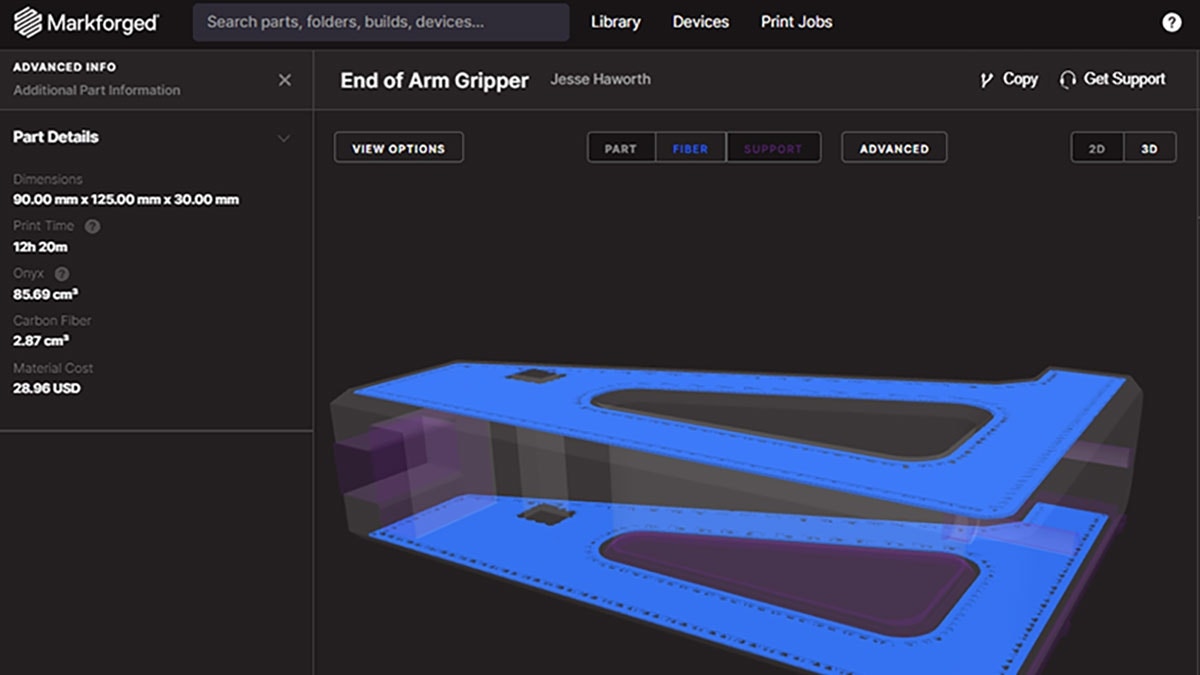I work with companies of all sizes to justify the purchase of additive equipment in price ranges from $3K to over $500K. What we have found at Hawk Ridge Systems is that the key to bringing in a new piece of equipment is creating a rock-solid justification for the purchase. At the end of the day, key decision-makers in an organization need to see the value in bringing additive technology in-house. They need to understand the return on investment (ROI). In this post we will review how to do just that by providing a blueprint for creating a strong justification.
Step One: Identifying the Need | Specific Part Files
Identifying the need is a great first step in additive justification. Often, companies are not fully aware of how 3D printed parts can be used within their organization. It is an eye-opening experience to have someone with a little additive know-how walk through a facility and point out numerous examples of potential 3D printed applications. Additive technologies are used in three primary categories: prototyping, manufacturing aides, and production.
The first step to justification is to identify specific part examples in these categories where additive manufacturing may be a good fit. Try and find five to six examples if you can! These can be current projects or past projects. Often, companies will use legacy part files for use in justification because they can directly compare the 3D printed part to what has previously been created using a different manufacturing method.
Sometimes you may not even know if a specific part or project is a good fit for 3D printing. The good news is that we can quickly identify if a part may or may not be a good fit as well as advise on any technical challenges with those tricky part applications.
Step Two: Put a Value on Time
I am sure you have heard the statement “Time is Money.” Most would agree with this statement, but putting an actual dollar amount on time can be difficult. Human labor is going to be one of the key time considerations. How many man-hours does it take to produce a specific part using my current process?
The next element to consider is more aimed at production capability of a particular process. What is my current lead time to part in hand? This could be specific to an internal machine output rate, or it could be the lead time from an outside vendor. We talk with folks all the time that move to an additive process to avoid overseas shipping delays for production runs.
Finally, understanding a project time allotment is critical. What is my deadline to produce this part/order? In the highly competitive space of product development, time to market is vitally important. Assigning a value on time to market will go a long way when justifying additive equipment.

Step Three: Understand Your Current Cost
What does it currently cost you to produce this part? This is a critical question in the justification process. In the prototyping world, this could be the cost to outsource the design to a service bureau. For manufacturing aides, it could be a time calculation when an employee and machine must stop working on high-value projects in order to create a jig or fixture. In production, it could be a direct comparison with injection molding for a certain quantity. Lead times, tooling cost, and design changes should be considered in comparison to an additive process that can eliminate some of these challenges.
Step Four: Know your Companies Internal Purchasing Process
Understanding internal budgeting structures as well as how equipment is typically purchased in your company are two key factors in the justification of additive equipment. Is equipment normally purchased using a capital expenditure (CAPEX) or can you make purchases using an operational expenditure (OPEX)? Is your budget determined monthly, quarterly, or yearly? What internal hoops do you need to jump to make a purchase? Who are the stakeholders that need to give the green light to move forward? Having a clear understanding of internal structure will give you a much higher chance of success, especially when it comes to financing options. At the end of the day, choosing the path of least resistance is key.
Step Five: Additive Analysis
Now that you have a full understanding of targeted parts, current cost and time, it is now time to compare this data to an additive process. As an Application Engineer, running the numbers is my bread and butter; Hawk Ridge Systems is happy to help!
There are three things to consider when justifying a printing system: true cost of ownership, time, and post-processing. During this analysis, the most effective numbers come from actual part files that have value to your organization.
True Cost of Ownership
Variable Cost
A good place to start in your additive analysis is with the variable costs. Variable costs are purely based on costs related to the production of your part. Typically, variable costs can be boiled down to materials, consumables, and labor. If your part production is $0, then this cost will be $0. A variable cost analysis is one of the best ways to quickly compare an additive process to any other manufacturing method.
Fixed Cost
Once you are satisfied with variable costs, then it is time to dig deeper and understand the fixed cost. Fixed costs are consistent and predictable regardless of how many parts you are producing. This typically involves the price of the machine, auxiliary equipment, service contracts, facilities, and any maintenance kits. Fixed costs can even be amortized over a certain number of years and added into the part cost if desired.
Time
Print Speed / Parts Per Week
Print speed is an important factor to consider when looking at additive technology. How many parts can the system output in a week? Keep in mind your current needs and plan for any future growth in demand for printed parts. Your production requirements and future needs can quickly narrow down the field of additive equipment that will be most suitable.
Human Labor Required to Operate the System
A common mistake that happens when purchasing additive equipment is that the buyer doesn’t have a good grasp of the human labor required to operate the system. If the printing system requires a significant labor investment per part, it is important to capture that time and understand the cost. For those looking to move into production, an important follow-up question is how can this process be automated?
Post Processing
Post processing is one of the less glamorous attributes of additive equipment and it is rarely shown in marketing materials by manufacturers. Yet it is key to fully understand what it really takes to have a part in hand. This is true, especially when comparing one additive technology to another. There are two types of post-processing to consider: minimum required post-processing, and further finishing. Often the minimum requirement is related to support removal for most technologies. Powder-based technologies like Formlabs SLS 3D printers do not require support structures, yet they do require powder removal through bead blasting. There are also a few DFAM strategies that can be applied to eliminate support structures in extrusion-based equipment such as Markforged. And it is important to understand that all parts do not take the same amount of time to post-process. Some parts have deep recesses or channels that are hard to reach while other geometries are very simple. Make sure you know what it takes for your specific parts.
Further finishing may be required if the raw part is not ready for end-use in your application. This further finishing could be surface smoothing, coatings, machining, etc. Post processing also has a time value, whether that be cleaning, cooling, or drying. In the production world, automated post-processing equipment is strongly recommended. Don’t let post-processing sneak up on you in a justification.
Step Six: Facility Planning
Depending on which machine you go with, facility prep and planning can become a major consideration in the justification for equipment. For larger production printing systems we see two areas that need to be carefully considered: logistics, and print room planning. Logistics include receiving crates and having a clear path for the equipment to reach the print room. In the Bay Area, logistics can be a major roadblock especially with facilities that are multiple stories high. Sometimes facilities do not have large elevators that can handle bigger printing systems. When this occurs the next best option is to bring in a crane and remove an exterior window panel to lift the printing system. To offset this cost, companies will bring in several large pieces of equipment at the same time using this method. In the print room, your major considerations will be power, proper clearance for the machine/auxiliary equipment, and depending on the machine, compressed air and air ventilation could come into play.
We at Hawk Ridge Systems are happy to walk you through every step as we install printing systems in all sorts of challenging environments.
Step Seven: ROI Running the Numbers
Now that you have all of the data, it is time to crunch the numbers. The beauty of this process is that concrete data points gathered from previous steps take away any guesswork. You will have a clear answer at the end which is great! If equations make your palms sweaty, no worries! Just take a look at what should be considered and we can help with the math. We love crunching numbers and would be happy to help you out at this stage.
Variable Cost Savings
Start by gathering variable cost savings. This is done by subtracting your current part cost from the additive part cost. Remember, variable costs do not take into account the cost of purchasing the machine. We are only looking at materials/consumables and labor at this point. Variable cost savings calculations will act as a sanity check, you normally want to have a lower additive part cost compared to traditional manufacturing at this point. If not, make sure and capture the additional savings in the next step to see if additive is going to be a good fit.
Additional Savings
Next, it is time to capture additional savings gained from switching to an additive process. These amazing benefits are often overlooked in a cost analysis. It is very important to understand these benefits by putting a dollar amount on them.
Time Savings Example: Your current lead time for an order of 100 parts could be two months, but an additive process can bring that lead time down to one month for 100 parts. What is the value of this per part? Time Savings (per part) = Dollars Saved Per Month from Faster Lead Time / Number of Additive Parts Produced Per Month
Engineering Design Savings Example: You now have more freedom to design parts without traditional manufacturing constraints. This leads to quicker designs and/or savings from outsourcing the engineering work to a manufacturing engineer. Engineering Design Savings (per part) = Engineering Labor Savings / Total Number of Parts Desired
Increased Profit from Increased Production Example: You determine that an additive process will allow you to produce and sell 100 more products per month. Your profit per part is $20. You now make $2,000 extra per month by switching to additive. Increased Profit from Increased Production (per part) = ((Additive Parts Per Month – Current Parts Per Month) x Profit Per Part) / (Additive Parts Per Month)
Tooling Savings for Revision Changes: Your product is normally injection molded but you incur high tooling costs for design changes, now you want to look at an additive solution to allow for free revision changes. You typically go through two revisions during a product life cycle and each revision will cost $15,000 (not including the original cost for the tool since this is captured in the original part cost comparison). Tooling Savings for Revision Changes (per part) = (Number of Revision Changes x Tooling Cost) / (Total Number of Parts Desired * (Number of Revision Changes/(Number of Revision Changes + 1)))
Total Savings
Total Savings is simply adding the variable cost savings to additional savings to provide a complete picture of what should be considered in the ROI calculation. At this point, you will have a good idea if an additive solution is right for you.
ROI Break-Even Point
Lastly, it is time to determine how many years it will take to break even with a particular machine. To do this you will multiply your total savings calculated from the previous step by the number of parts a particular machine can produce in a year. Then divide that number by your fixed costs. This is your total cost of equipment including auxiliary equipment and any maintenance plans or warranties.
ROI Break-Even Point Example: Your total cost of equipment is $250,000. You determined that you can save $50 per part with an additive process and can produce 2,000 parts per year. Your break-even point is ~2.5 years. After that, you are in the green!
Step Eight: Plan for Future Growth
Will your additive solution be scalable for higher demands and future growth? It can take a great deal of effort to have a piece of equipment approved for purchase. Make sure that the machine you bring in will not only address your current needs but future needs as well. Once the word is spread that you have a new machine, will other groups within your company all of the sudden start having print requests? Do you have future projects in the pipeline that can heavily use additive manufacturing? Does your facility layout lend itself to future expansion? These types of questions are good to consider when planning for the future. Thinking forward to the next 5-10 years can pay off nicely when you have a scalable solution in-house.
Step Nine: Understand the Purchasing Options
Now that you know additive is the way to go, it is time to look at purchasing options. When looking at a large purchase, many routes can be taken. Leasing, financing, or outright purchasing the equipment are all very common purchasing routes. Often we see customers who take advantage of specific pricing, or payment plans who are now able to jump up to a larger machine that better suits their needs. This is especially true when the purchase can be moved to OPEX. Having a lower monthly payment can be much easier to swallow rather than a big chunk all at the same time. Hawk Ridge Systems has great financing partners who are familiar with additive equipment and knowledgeable in this industry. We are happy to help you navigate the purchasing process.
There you have it, by following this tried and true blueprint you will be well prepared to create a rock-solid justification for purchase with your next 3D printing system. If you are ready to start your justification process, feel free to contact us at Hawk Ridge Systems today!




